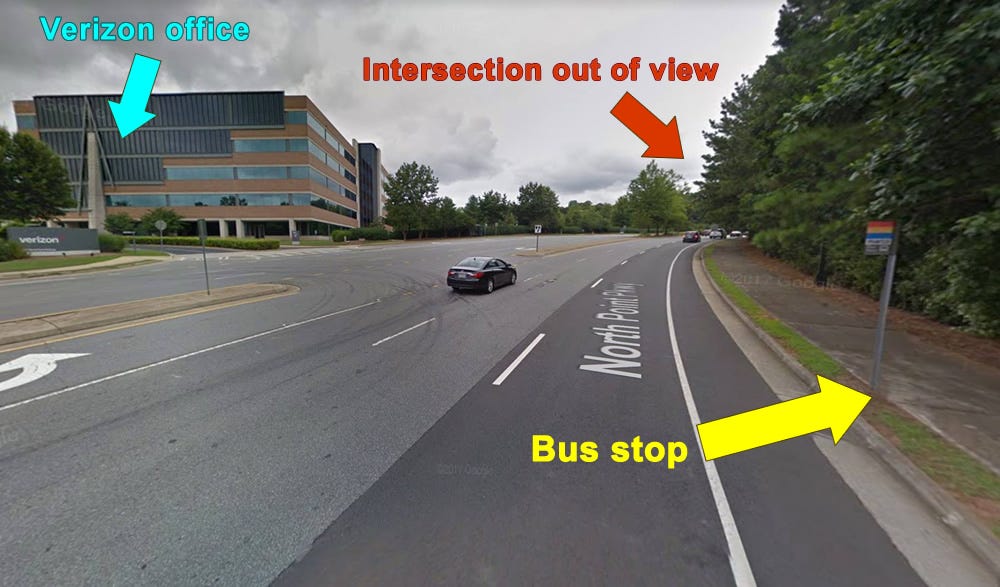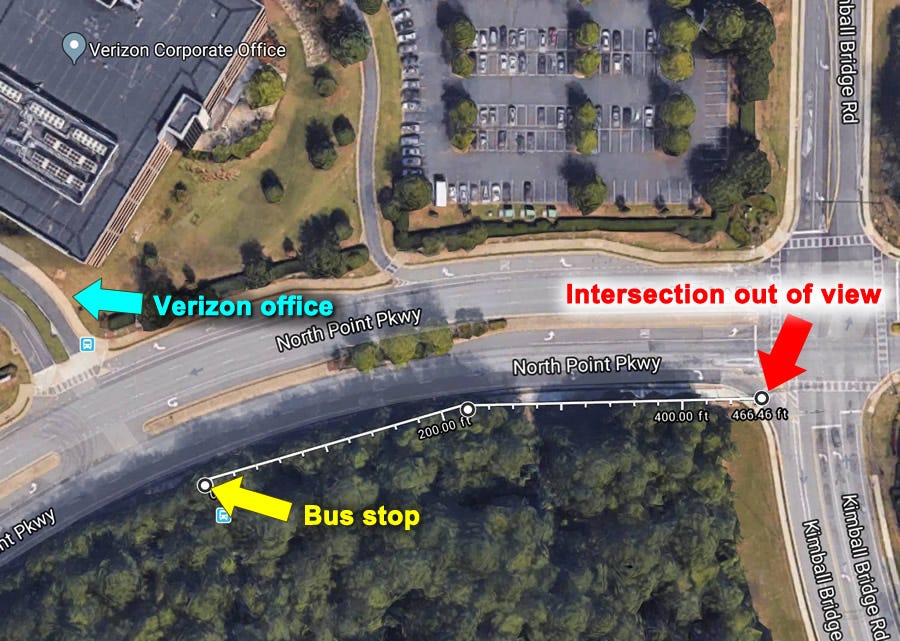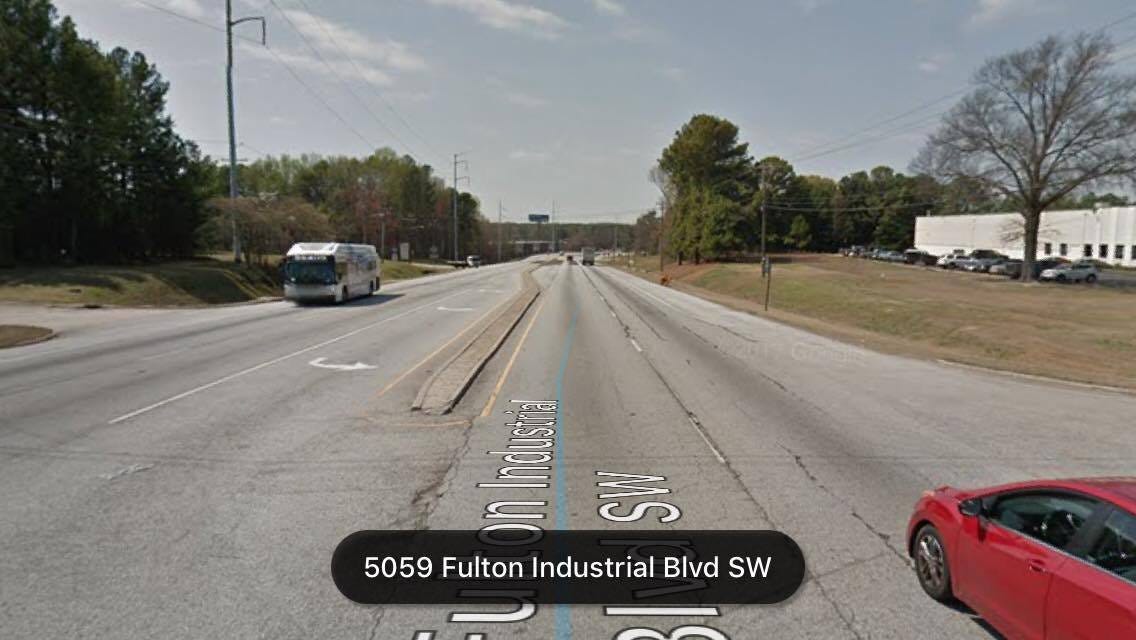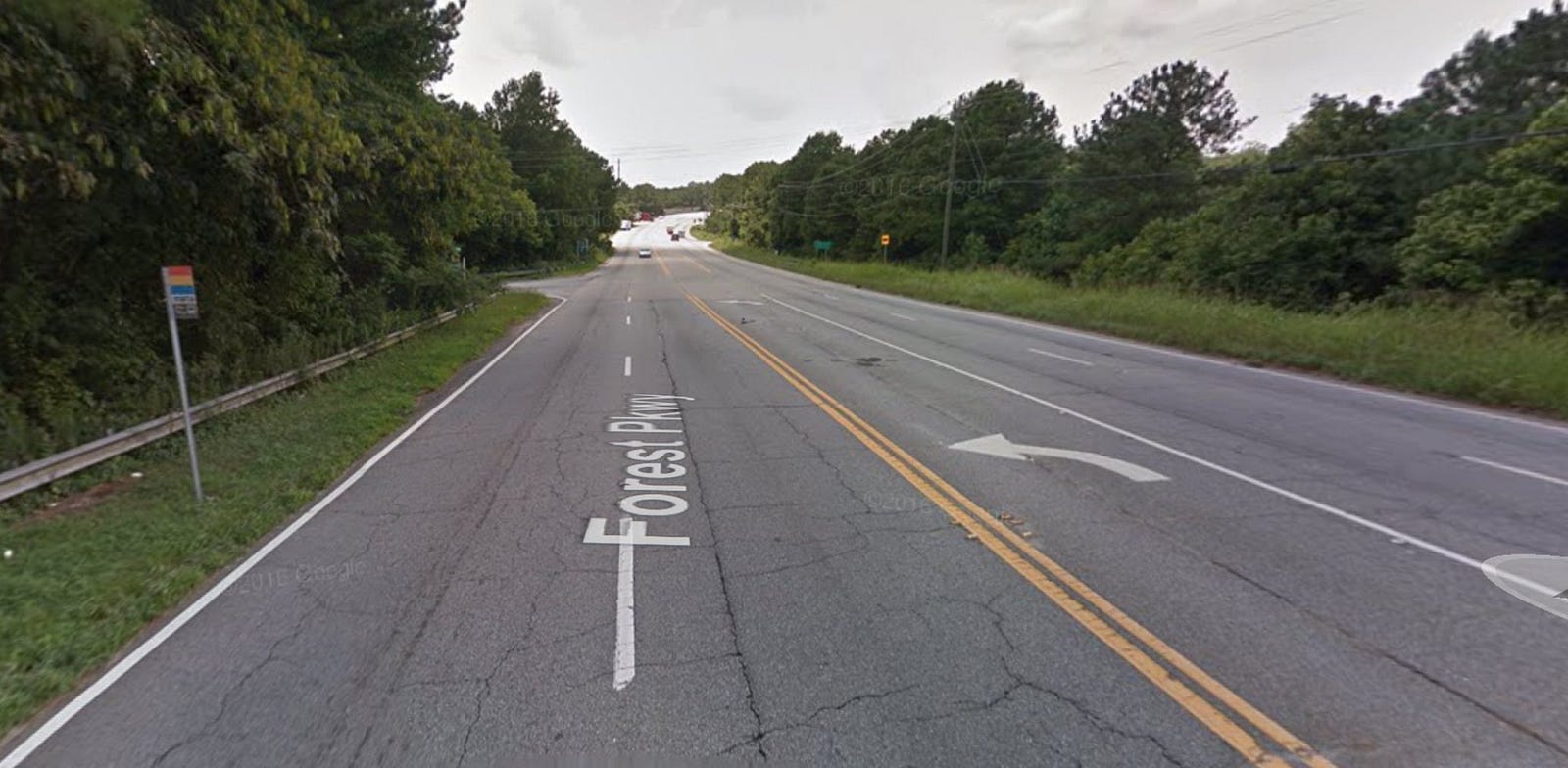The deadly mismatch between bus stops & road design in Atlanta

The mere presence of bus stops near destinations doesn't make a place transit-friendly or walkable -- not when streets are deadly for pedestrians. The Atlanta region needs cross-agency cooperation to fix this.
Ramona Devore was killed last week after being hit by two cars. She had just gotten off of a MARTA bus in Alpharetta and e was attempting to cross North Point Parkway to get to the Verizon office where she worked, directly across the road from the bus stop.
See the above image for a look at where the Verizon office sits. Notice what’s missing between this MARTA bus stop and this office building: anything that would allow a person to walk safely across this sea of car lanes. No traffic light, no crosswalk.
Blaming the pedestrian doesn’t work


There is a traffic signal with a crosswalk about 466 feet away, well out of view of anyone standing at this bus stop. Many people will blame the pedestrian saying that “she should have walked up ahead until she found a crosswalk.”But it isn’t that simple. Look at the design of those turning lanes at the intersection of North Point Pkwy and Kimball Bridge Rd — their curves beckon drivers to maintain movement rather than to stop and look for pedestrians. There is in fact a “Keep Moving” sign at the intersection (pictured below), so even when pedestrians have a crossing signal, cars are basically ordered to move forward into the crosswalks.Alpharetta, like many places, has created a deadly obstacle course for pedestrians, and they've done so by providing the highest level of service for drivers. (I’ve written an email to the City of Alpharetta department of public works to complain about conditions — no reply has been sent to me yet).
Blaming the bus stop’s location doesn’t work
You might think: “why doesn't MARTA just move the bus stop closer to the intersection?” But there’s a long right-turn lane that opens up just beyond the curve, and safety standards prevent the agency from putting a bus stop in a turn lane.Alpharetta has to do something dramatic with the street design in the long term to make this safer for people on foot. For now, the best move is probably to take out this bus stop altogether.Which puts MARTA in an odd spot. The agency is tasked with providing bus service to these in-demand areas. They can’t just pluck up all the bus stops and say there’ll be no further service on these roads for the next few years until they’re redesigned, can they? What about all the customers who rely on transit?
Pedestrians need to be safer near bus stops, not less safe


Research by the Atlanta Regional Commission in 2010 shows that 21 percent of vehicle-pedestrian crashes in metro Atlanta occurred within 100 feet of a transit stop. Nearly half occurred with 300 feet of a transit stop.That info comes from the Safe Routes to Transit report from PEDS, a group that advocates for pedestrian safety in the Atlanta region. Also from that report: “Some 90 percent of pedestrian crashes occur when people are trying to cross the street. Yet for transit users, traveling round trip requires crossing the street at least once.”Streets that contain transit stops, or that lead directly to them, should be the most safe and inviting places to walk in Atlanta. And yet far too many of them look like this section of Fulton Industrial Boulevard below where a pedestrian was killed by a vehicle collision last year. There are MARTA bus stops on both sides, yet no crosswalks or traffic light.And some have an infuriatingly dangerous road design like Forest Parkway in Clayton County, where a pedestrian was killed last year after being knocked down by the mirror of one car, then hit by a second car. Notice the MARTA stop on the left.Two lanes each way, no sidewalks, no street lights, and a barely-there strip of grass that a pedestrian could use. Luxurious design for car drivers, and nothing for pedestrians using MARTA. It’s like a sick Hunger Games-type contest where some players have deadly metal cocoons and others just have walking shoes. Is it any wonder that so many people have a low opinion of transit?
What can be done? Cooperation is needed
The safety problem is exacerbated by a complex mix of city, county and state-run streets, transit stops provided by separate regional systems, and large developments that sometimes seem to happen with zero thought about anyone arriving by means other than a car.To pull safe pedestrian connections to transit out of that complexity will require a lot of cooperation between governments and transit systems and developers -- and from the looks of thing, that doesn’t seem to be happening at a level that's needed.How do we make progress? If it turns out that there's no bold and powerful champion for this cause within the leadership of local governments or transit agencies, advocates from all over the region will have to become a throng of champions — emailing and calling their council members and mayoral offices, and speaking up at public meetings. None of it will be easy, but all of it is essential.
We can't promote transit well without safe roads
The City of Atlanta and the Atlanta region want to promote transit use. We've heard that goal time and again from our leaders.If it's true, then we have to face this dangerous conundrum: there’s a terrible lack of safe places for bus stops to be placed, yet MARTA is tasked with providing service to these areas. The mere presence of bus stops near destinations does not make a place transit-friendly or walkable, nor does it automatically provide balance in mobility between the car-haves and have nots.Any time we ask people to try commuting by transit, or to engage in active transportation, we have to ask: "where are the safe and inviting roads for doing this?"Local elected leaders and transit-agency leaders must devote resources to the creation and maintenance of safe connections to bus stops. Transit access in itself is not “moving the needle” in the right direction for the region when streets are this deadly to walk on.

